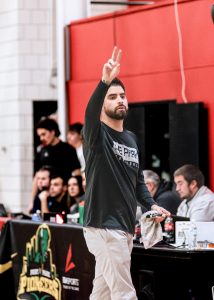Tuition set to increase again
April 9, 2019
“Running a university is expensive,” Point Park University President Paul Hennigan said. “Every year the costs to run this place rise, and that ultimately drives a tuition increase.”
Tuition prices are rising for the 2019-2020 school year, a decision by the Point Park administration that has been an unpopular one in the past. But as Hennigan explains, the increase is unavoidable.
“It (tuition) just varies on what the expenses are,” Hennigan said. “Our single largest expense increase in the budget is scholarships, financial aid for students, helping students be able to figure out how to afford coming to school. And then personnel costs. So, paying the faculty and staff, the student affairs staff, and then it’s all the facility costs.”
A tuition increase is not something current students are unfamiliar with. Costs to attend Point Park have increased each of the last four school years.
But the amount by which those costs are going up each year is itself slowly increasing.
During the 2015-2016 school year, tuition for non-Conservatory students was $27,000 a year, and $34,400 a year for students in the Conservatory of Performing Arts (COPA). Both of those totals rose for the 2016-2017 school year to $27,780 and $35,400 respectively. That’s a 2.9 percent increase.
During the 2017-2018 school year, tuition was set at $28,860 for non-Conservatory students, and $36,780 for Conservatory students. This year, those prices increased to $29,980 for those in schools outside of the Conservatory and $38,220 for COPA students. Comparatively, a 3.9 percent increase, or $1,120 more for non-Conservatory students and $1,140 more for those in COPA.
Next year will be no different. Tuition will increase for the 2019-2020 school year by 4 percent from the current price to attend Point Park. Non-conservatory students will pay $31,180, while COPA pricing will be just short of $40,000 a year, at $39,740.
Difference in tuition costs between Conservatory and non-Conservatory students has been a subject of dispute in recent years, as some COPA students believe that they should be paying the same price as students in other programs, while non-Conservatory students argue that they should not have to pay for Conservatory resources that they don’t use.
Hennigan explained the difference in pricing between the two groups, citing a biannual cost study run by the university that consistently finds that COPA programs cost more to run. He also noted that the Conservatory’s smaller student-to-teacher ratio contributes to the price difference.
“Conservatory programs are the most costly to run,” Hennigan said. “So it’s not necessarily fair for non-Conservatory students to subsidize Conservatory students. Conservatory students are paying for what they use, so to speak.”
But not all students agree with the tuition difference. Anton Johnson, a sophomore mass communications major, expressed his disdain for the way that the current prices are set.
“It’s kind of messed up when you think about it,” Johnson said. “I mean the different sports teams use different facilities and they don’t have to pay more, so why should COPA students?”
Johnson expanded, saying that he didn’t believe that most non-Conservatory students would be opposed to paying a small amount more to take the financial burden off of Conservatory students.
“Honestly I feel like some students wouldn’t mind paying a little more so that COPA students can pay the same amount as they do. But I guess it depends on how much more.”
Brenden Gill, a freshman cinema student, followed Johnson’s sentiment.
“I mean I don’t really think it’s fair that we pay more than other students, mainly because I don’t really think that our extra tuition dollars actually go into COPA programs,” Gill said.
But while some students oppose the price difference, Hennigan firmly believes that the higher COPA tuition is justified.
“Are you learning?” Hennigan said. “Do you believe in making an investment in your future? If either one of those answers is no, I want to know why.”



















